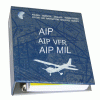Delta B752 at Atlanta on Oct 10th 2011, rejected takeoff
A Delta Airlines Boeing 757-200, registration N553NW performing flight DL-2210 from Atlanta,GA to Dallas Ft. Worth,TX (USA) with 182 people on board, rejected takeoff from Atlanta at low speed (about 60 KIAS) after a loud bang was heard and the left hand engine's (PW2037) fire indication activated. The aircraft slowed safely and returned to the apron, where passengers disembarked normally.
The NTSB reported on Nov 9th 2011 that the left hand engine's diffuser was found ruptured. The engine has been replaced, the damaged engine was disassembled and parts were taken to the NTSB laboratories for further examination.
On Oct 24th 2014 the NTSB released their final report concluding the probable cause of the incident was:
the return to service of overhauled airplane engine parts with undetected fatigue cracks, resulting in complete loss of engine power and uncontained engine failure. A contributing factor was the inadequate diffuser and HPT case inspection procedure.
The NTSB reported that as result of the uncontained engine failure there were numerous dents and impact marks on the leading edge and underside of the left wing, both halves of the engine core cowl were significantly distorted and could be freely rotated until hitting the wing, the wing impact marks were consistent with the core cowls hitting the wing.
The NTSB described the diffuser damage: "The engine diffuser case, high pressure turbine (HPT) case, and nozzle guide vane (NGV) support joint, referred to as the "M-flange," were fractured at a bolt hole located at 12 o'clock (BH1). A longitudinal fracture extended from BH1 about 15 inches forward into the diffuser case and about 2.5 inches aft into the HPT case. There was a 270° circumferential fracture in the diffuser case about 15 inches forward of the M-flange, and a 120° circumferential fracture in the HPT case about 2.5 inches aft of the M-flange; an approximately 15-inch-wide section of the diffuser case, along with fractured segments of the HPT case and NGV support attached at the M-flange, had unwrapped from the right side of the engine. The engine was disassembled and the diffuser case, NGV support, and HPT case were shipped to the NTSB materials lab for further investigation."
Metallurgical examination revealed low cycle fatigue cracks had developed in all three components at the M-flange bolt hole, it was determined that the cracks developed through the HPT case over the last 7,305/7,380 cycles, the cracks in the diffuser case over the last 2,471 and 5,159 cycles. According to the technical documentation the components had last undergone an inspection for cracks 3,479 cycles before the failure, no cracks were permitted during such inspections. The NTSB could not determine why the inspection had been that ineffective, the maintenance facility had been closed in August 2011. As result of the investigation the FAA released an air worthiness directive to have another 50 engines having been identified to go through those checks in the maintenance facility, to be checked for cracks, no additional cracks were found.
http://avherald.com/h?article=445d75fc














Komentarze